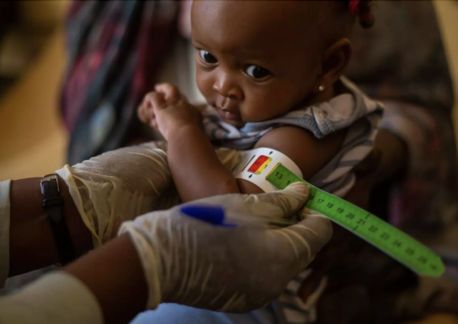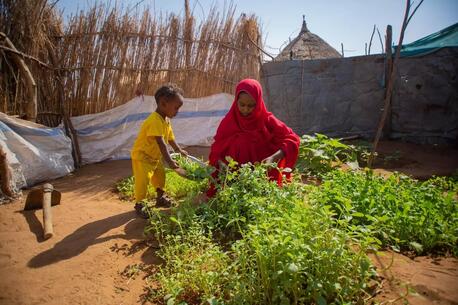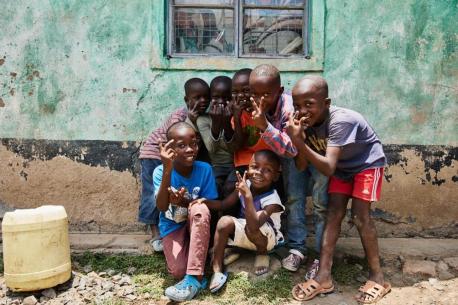
UNICEF in Kenya
Harambee — “pulling together” in Swahili — has become more important than ever as the country's crises pile up. Learn how UNICEF is working with the government and local partners to support children and families in need, and how you can help.
A terrible drought and other shocks intensify needs in Kenya
Although Kenya has been one of the fastest growing economies in Africa, two thirds of Kenyans live in poverty. One shock after another — the COVID-19 pandemic, crippling drought, price spikes caused by war in Ukraine — are hindering progress toward the country's development goals and increasing humanitarian needs.
Kenya's children are the ones who are suffering the most.
COVID-19 devastated Kenya's economy and strained its health system. It surged against a backdrop of existing hardships that came from a previous drought in 2019, floods, other disease outbreaks and a locust invasion. The pandemic also disrupted schooling for 17 million children.
While COVID cases have largely receded, the drought has only gotten worse. The water table level has dropped significantly, and most open water sources have dried up. Women and girls are having to travel farther and wait longer for water at boreholes, leaving them vulnerable to violence.
Africa is facing a water catastrophe. While climate and water-related shocks are escalating globally, nowhere else in the world do the risks compound as severely for children. — UNICEF Director of Programs Sanjay Wijesekera
The drought has also caused widespread crop failure and livestock death. Livelihoods have been destroyed, exacerbating food insecurity for millions of people and leading to widespread malnutrition. Severe shortages of water and good pasture have pushed families out their homes and led to conflict over resources.
Water scarcity is inhibiting good sanitation and hygiene practices, which causes illness and disease to surge. Children who are weakened by malnutrition are more likely to die of diarrheal disease from contaminated water.
Walking farther to fetch water or tend animals means less time for school. More and more families are being forced to migrate, while more girls are being forced into marriage.
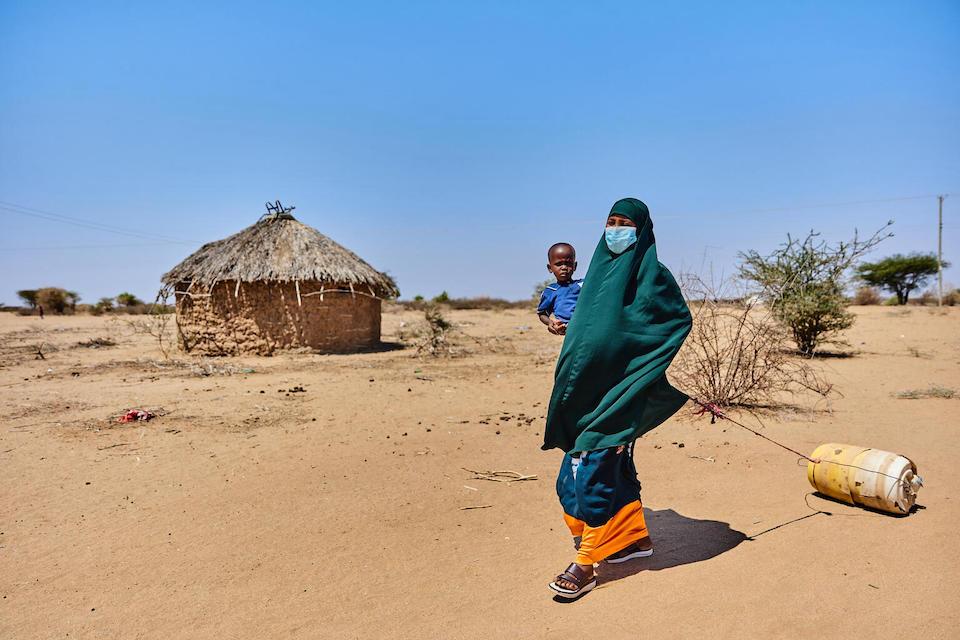
How UNICEF is helping vulnerable children in Kenya
UNICEF works closely with the government to respond to the drought's worst effects on children and families in the most vulnerable communities, leveraging its expertise and leadership in the areas of water and sanitation, education, nutrition and child protection.
Emergency response measures have been accelerated to improve access to safe water and sanitation to those in need — especially in the arid and semi-arid land countries, where this is most challenging — and to strengthen delivery of primary health care services, including child immunization.
UNICEF is also focused on reaching and treating children suffering from severe acute malnutrition (SAM) amid rapidly rising rates. UNICEF is the world's largest single procurer of Ready-to-Use Therapeutic Food (RUTF), a nutritious peanut paste and highly effective treatment for SAM.
A focus on children's health, protection and education
Children living in Kenya’s northern counties and urban informal settlements are more likely to die from preventable diseases than those living elsewhere in the country.
While vaccination rates are relatively high at 88 percent — an increase from 84 percent in 2014, thanks to support from UNICEF and other partners — only half of children living in pastoralist and underdeveloped countries of Kenya are fully immunized against vaccine-preventable diseases. UNICEF is focused on supporting vaccination campaigns in these areas, working with local partners.
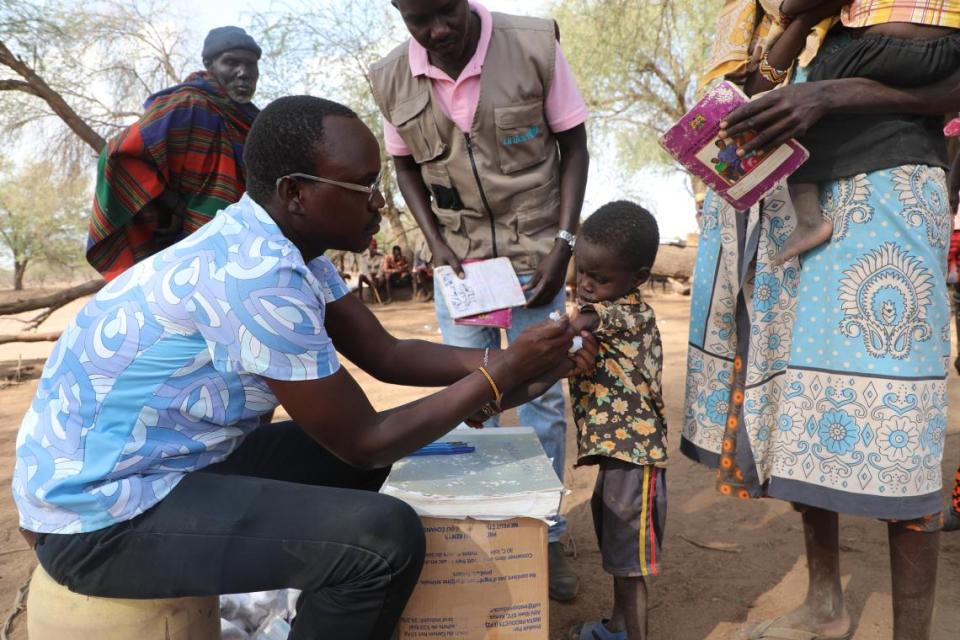
Ongoing activities also include:
- providing families with relief kits containing basic household items and water, sanitation and hygiene (WASH) supplies to help prevent cholera
- providing emergency shelter to people displaced by floods or drought
- rehabilitating boreholes so families have reliable, affordable access to the safe water
- installing solar-powered water systems to help communities adapt
- making sure HIV prevention, testing, treatment and care services are widely available and accessible
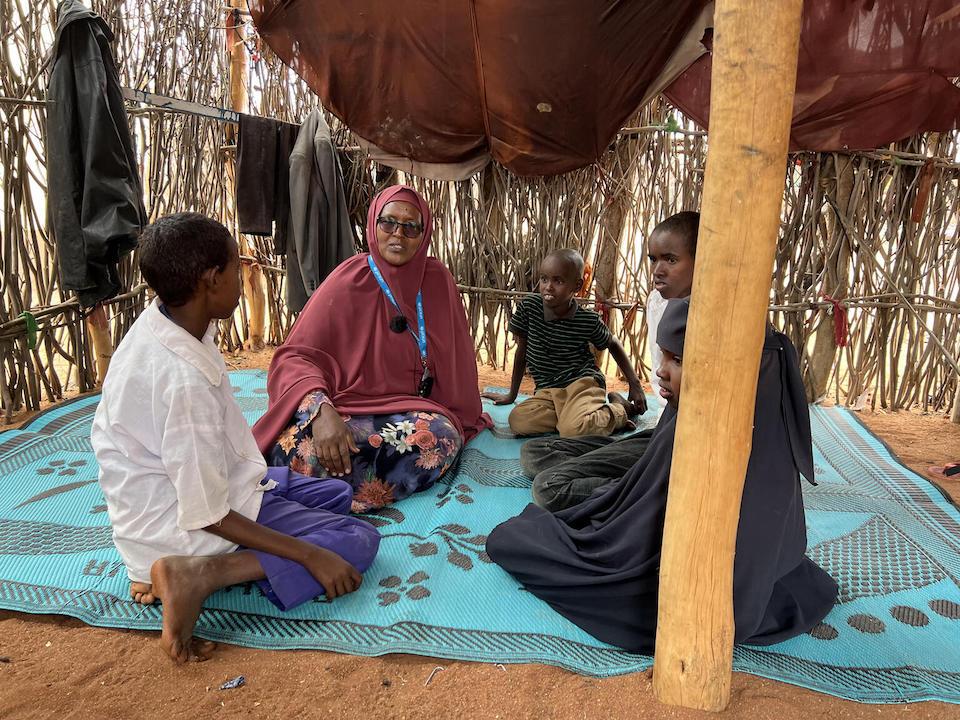
In child protection, UNICEF works with the government and other partners to:
- increase community awareness about how best to safeguard and protect children from violence, exploitation, abuse and harmful cultural practices
- provide safe and accessible ways to report sexual exploitation and abuse
- support interventions to prevent and respond to gender-based violence
- provide community-based mental health and psychosocial support services
In education, UNICEF is working with partners to improve the quality of learning and to support newly-enrolled students in drought-affected countries and in refugee settlements; training teachers; providing learning materials; and helping to renovate school latrines.
UNICEF is also helping to strengthen existing government-run social protection systems. This includes expanding humanitarian cash transfer programs, critical support that helps families who have lost their livelihoods meet basic needs.
How UNICEF supports Kenya's large refugee population
Kenya hosts more than 570,000 refugees and asylum seekers at several camps and settlements, 54 per cent of them children. The Kakuma Refugee camp in northwestern Kenya is one of the largest in the world. It is home to more than 160,000 refugees and asylum seekers from several countries, including South Sudan, Somalia, Ethiopia, Burundi, the Democratic Republic of Congo, Eritrea, Uganda and Rwanda.
UNICEF supports refugees and host communities by providing a range of services to vulnerable children and families. These include enhancing child protection, education, health, nutrition and WASH services in and around the settlements of Dadaab, Kakuma and Kalobeyei.
UNICEF works in over 190 countries and territories to help children get educated, stay healthy, protected and respected. Unrestricted donations give UNICEF the flexibility to direct resources to the most urgent needs.
Support UNICEF's mission. Your contribution makes a difference. Donate today.



